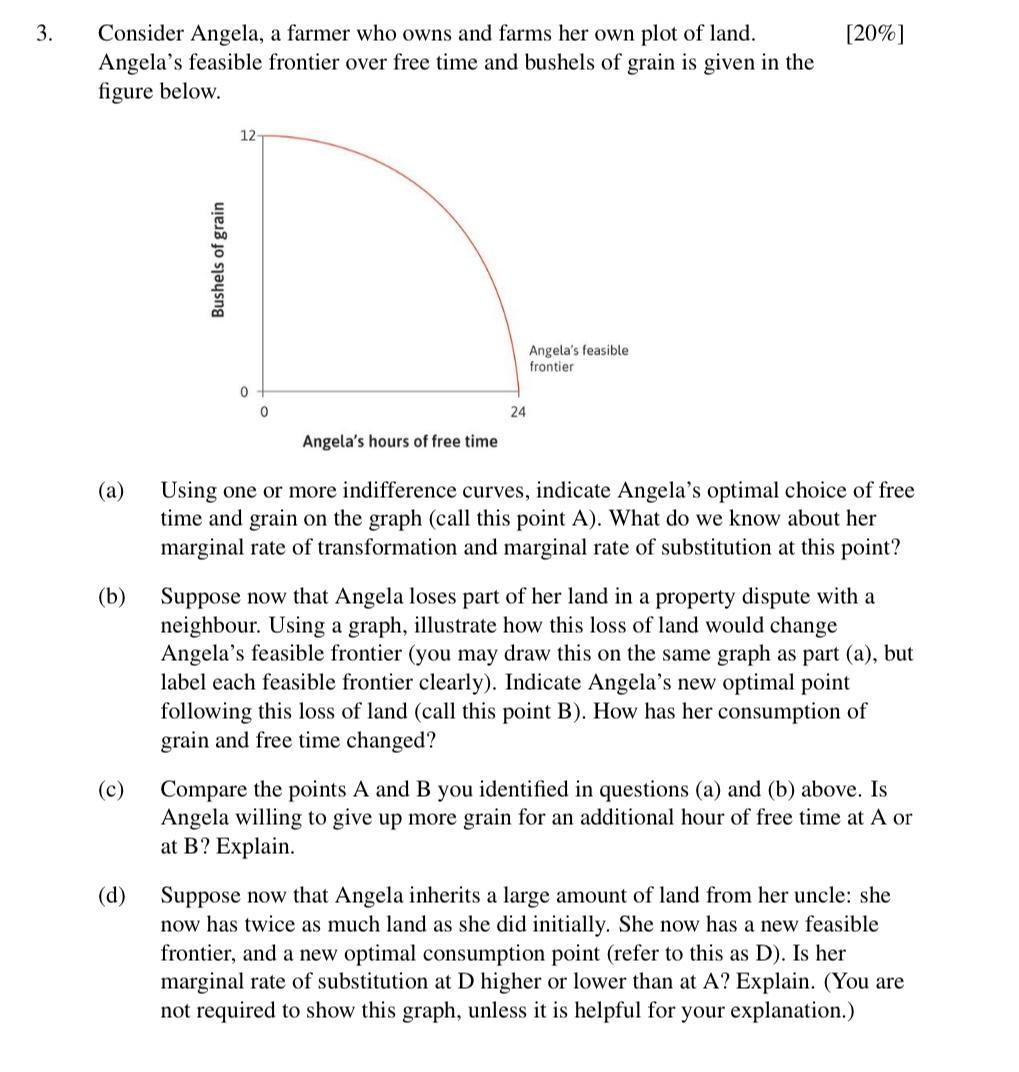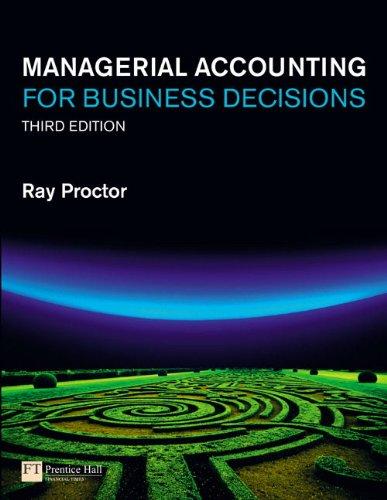
3. Consider Angela, a farmer who owns and farms her own plot of land. [20\%] Angela's feasible frontier over free time and bushels of grain is given in the figure below. (a) Using one or more indifference curves, indicate Angela's optimal choice of free time and grain on the graph (call this point A). What do we know about her marginal rate of transformation and marginal rate of substitution at this point? (b) Suppose now that Angela loses part of her land in a property dispute with a neighbour. Using a graph, illustrate how this loss of land would change Angela's feasible frontier (you may draw this on the same graph as part (a), but label each feasible frontier clearly). Indicate Angela's new optimal point following this loss of land (call this point B). How has her consumption of grain and free time changed? (c) Compare the points A and B you identified in questions (a) and (b) above. Is Angela willing to give up more grain for an additional hour of free time at A or at B? Explain. (d) Suppose now that Angela inherits a large amount of land from her uncle: she now has twice as much land as she did initially. She now has a new feasible frontier, and a new optimal consumption point (refer to this as D). Is her marginal rate of substitution at D higher or lower than at A? Explain. (You are not required to show this graph, unless it is helpful for your explanation.) 3. Consider Angela, a farmer who owns and farms her own plot of land. [20\%] Angela's feasible frontier over free time and bushels of grain is given in the figure below. (a) Using one or more indifference curves, indicate Angela's optimal choice of free time and grain on the graph (call this point A). What do we know about her marginal rate of transformation and marginal rate of substitution at this point? (b) Suppose now that Angela loses part of her land in a property dispute with a neighbour. Using a graph, illustrate how this loss of land would change Angela's feasible frontier (you may draw this on the same graph as part (a), but label each feasible frontier clearly). Indicate Angela's new optimal point following this loss of land (call this point B). How has her consumption of grain and free time changed? (c) Compare the points A and B you identified in questions (a) and (b) above. Is Angela willing to give up more grain for an additional hour of free time at A or at B? Explain. (d) Suppose now that Angela inherits a large amount of land from her uncle: she now has twice as much land as she did initially. She now has a new feasible frontier, and a new optimal consumption point (refer to this as D). Is her marginal rate of substitution at D higher or lower than at A? Explain. (You are not required to show this graph, unless it is helpful for your explanation.)







